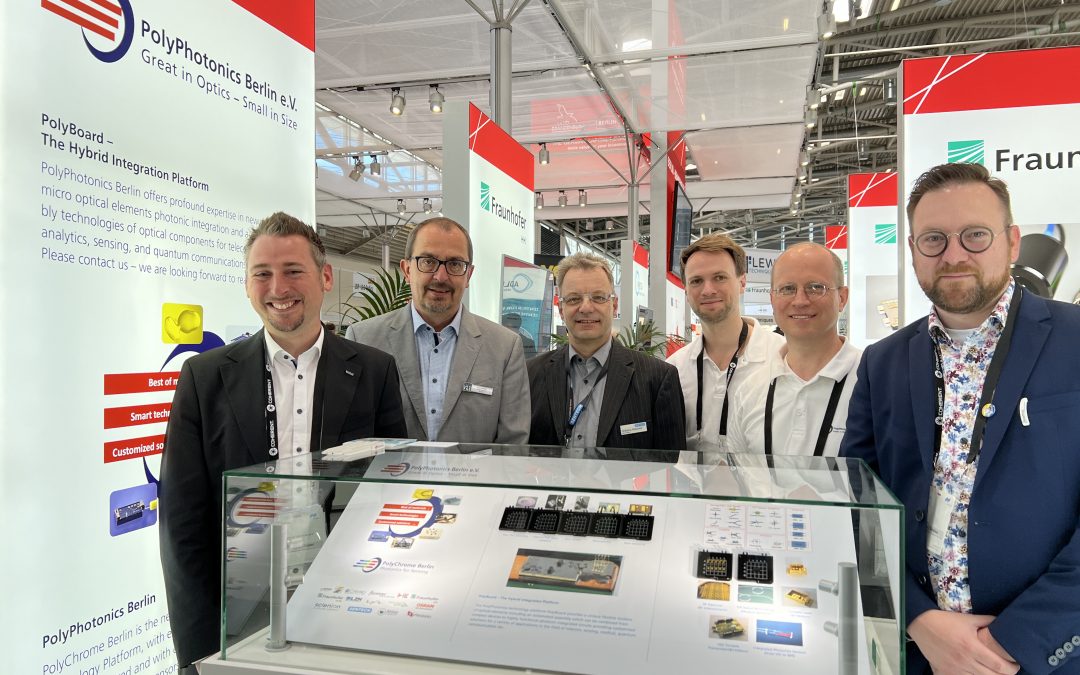

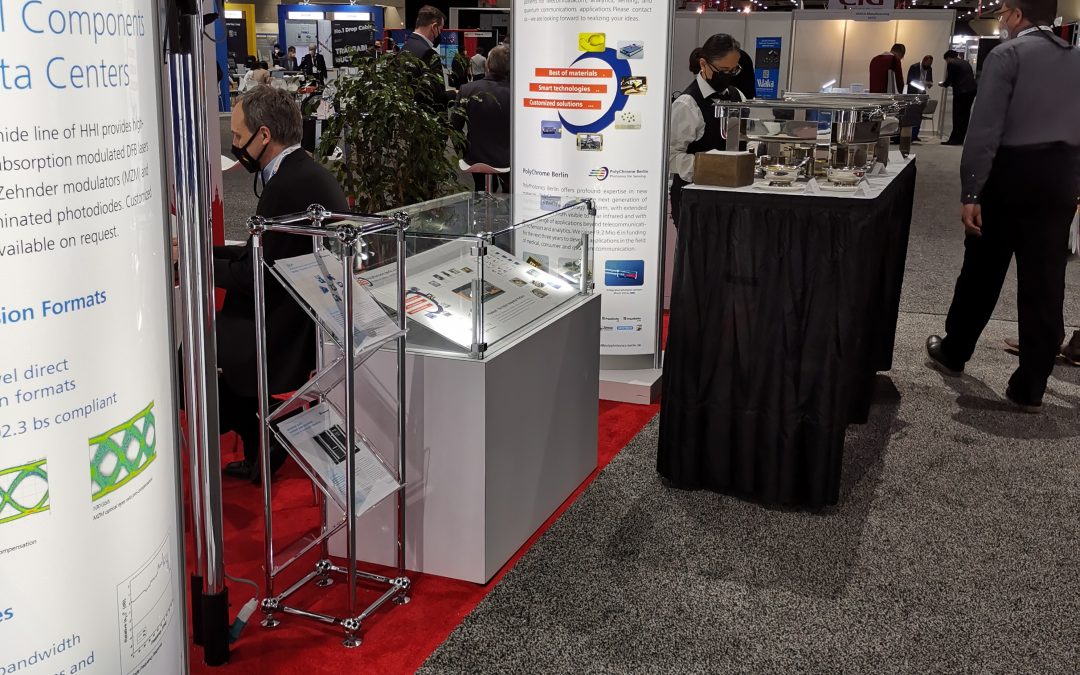
Impressions of the OFC 2022 in San Diego
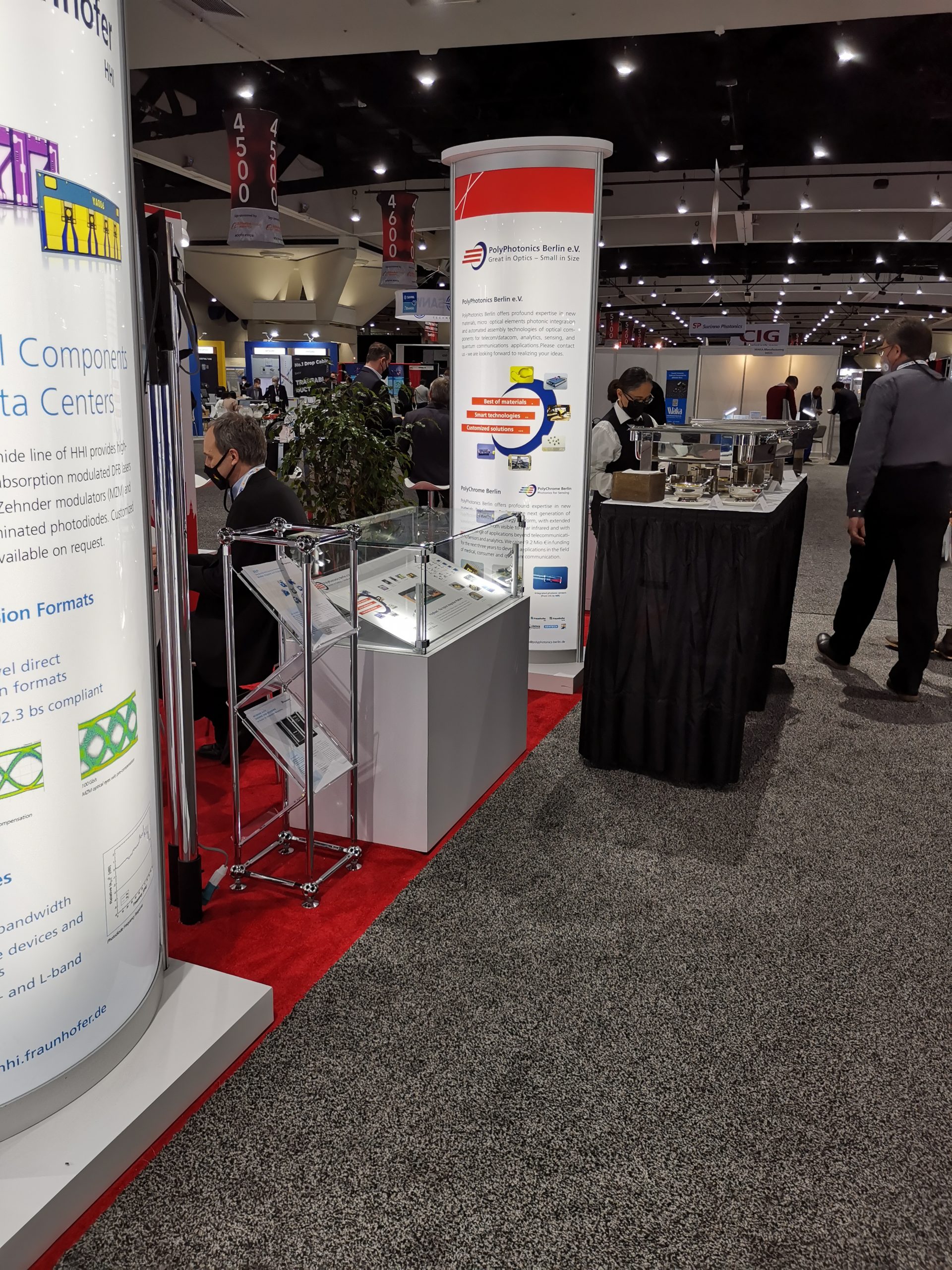
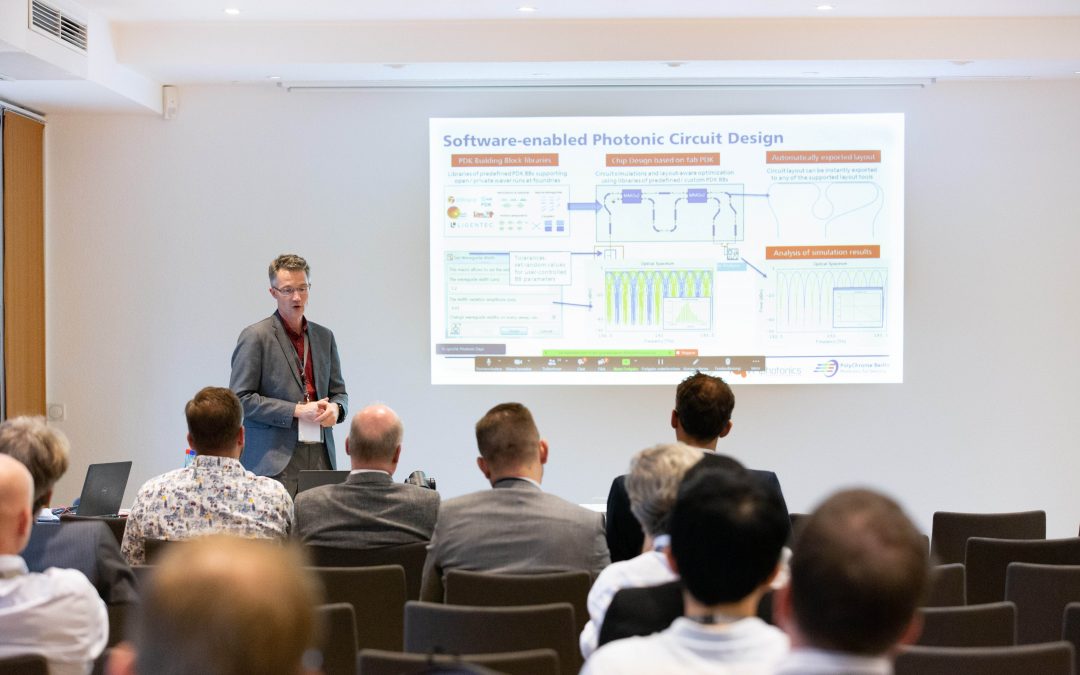
Revue of the Photonic Days Berlin Brandenburg 2021
Last month the Photonic Days Berlin Brandenburg 2021, organized by OpTecBB, took place in Berlin Adlershof. PolyChrome Berlin e.V. presented its current innovations and the new project PolyChrome Berlin within a workshop. Industry as well as research partners presented their contributions and exchanged ideas about their future projects. Enclosed the impressions of the workshop:
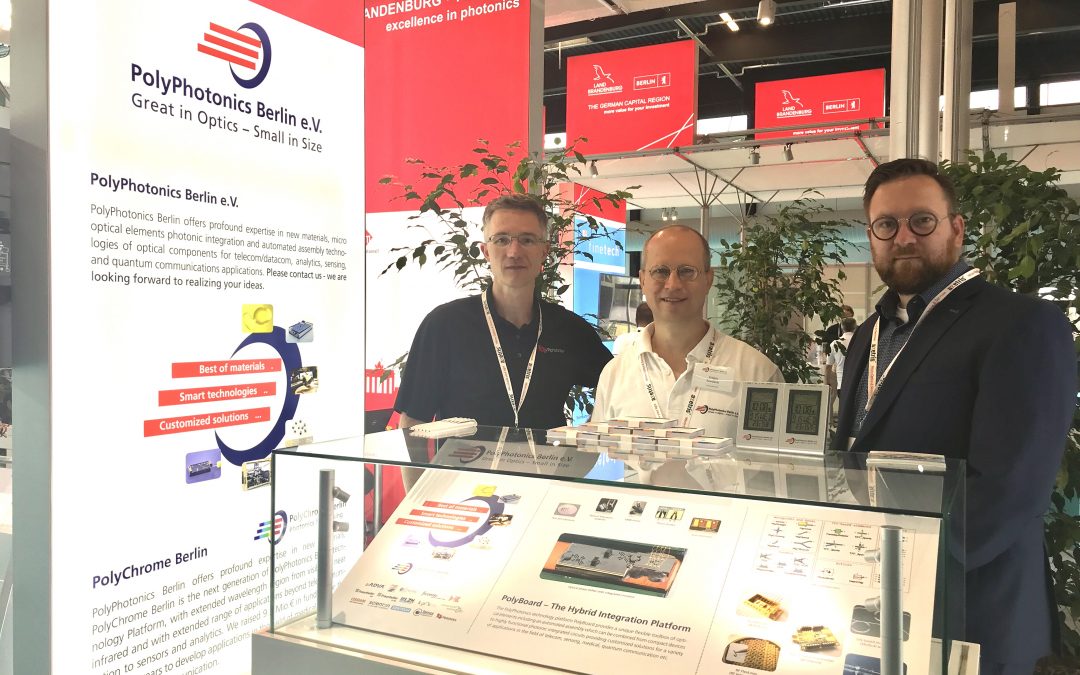
Review of the ECOC 2021
Last month the association PolyPhotonics Berlin presented its latest innovations and the new project PolyChrome Berlin at the ECOC. Here are some impressions from the booth of the PolyPhotonics Berlin e.V. association.
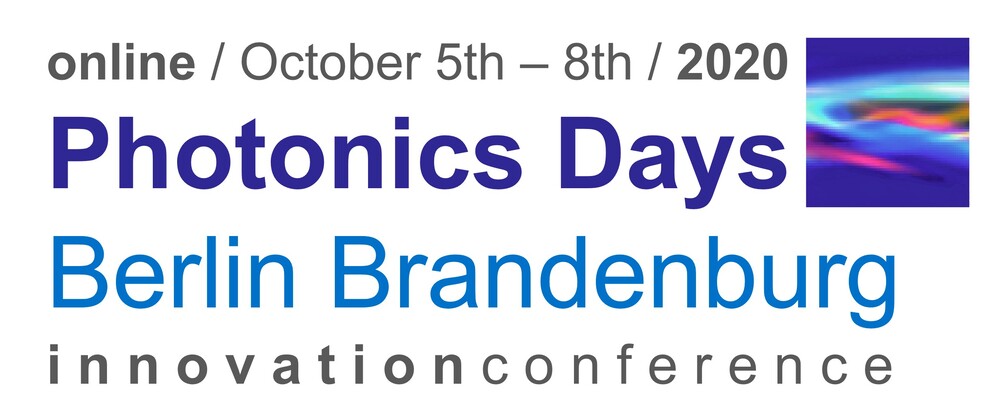
Workshop Program of the Photonics Days
05.10.2021, 15:00-18:00
PolyPhotonics Berlin, innovating hybrid photonic integration platforms for sensing
| 15:00 | PolyPhotonics e.V. | Dr. Arne SchleunitzCrispin Zawadzki | Welcome |
| Project sponsor Jülich | Dr. Stefan Schründer | The RUBIN programme within the BMBF funding initiative “Innovation and structural change” | |
| Berlin Partner | Gerrit Rössler | PolyChrome – A photonics lighthouse initiative for the Berlin cluster development policy | |
| 15:30 | Fraunhofer Heinrich Hertz Institute | Crispin Zawadzki | Hybrid Photonic Integration Platform |
| VPIphotonics | Dr. André Richter | Simulate and characterize your hybrid PIC design | |
| ADVA Optical Networking | Mirko Lawin | Rapid Precision Fiber Sensing | |
| micro resist technology | Dr. Jan Jasper Klein | Advanced polymer materials for PolyBoard technology | |
| eagleyard Photonics | Joerg Muchametow | Multi lambda source for multiple applications | |
| Allresist | Dr. Mandy Grube | Resist compositions for the fabrication of optical waveguide materials over a wide spectral range | |
| Laser Zentrum Hannover | Anna Karoline Rüsseler | Miniaturized thin-film filters | |
| OSRAM Opto Semiconductors | Dr. Hubert Halbritter | Semiconductor Laser in Photonic Applications | |
| Chembio Diagnostics | Volker Plickert | Novel POCT Devices | |
| Fraunhofer Institute for Cell Therapy and Immunology | Dr. Marcus Menger | Aptamers as specific molecular recognitions elements in biosensors | |
| Scienion | Dr. Wilfried Weigel | Biofunctionalisation of Biosensors | |
| Ficontec | Dr. Christoph v. Kopylow | Automated Massproduction on a flexible Manufacturing Platform for different Applications | |
| 18:00 | PolyPhotonics Berlin e.V. | Dr. Arne Schleunitz Crispin Zawadzki |
Closing remarks |
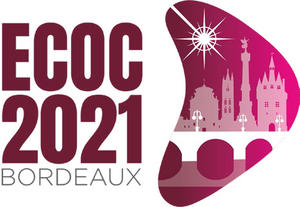
PolyPhotonics e.V. at ECOC 2021 – joint presentation of the states of Berlin Brandenburg
The 47th edition of ECOC will take place on September 13 – 15, 2021.
The outbreak of the global health crisis in 2020 was a worldwide eye-opener that digital infrastructure has become an essential part of everyone’s professional and personal lives. Never before has it been so clear that digital infrastructure as a whole has become an indispensable marketplace for food and goods, an enabler of our children’s education, an enabler of telecommuting, a repository of our culture, a guarantor of some of our civil liberties, and an advocate for our friends and family. Overall, COVID-19 has unleashed an intense wave of digital transformation and digital expansion, with light as the propellant.
This wave reinforces the Capital of Culture as a unique, vibrant place for global opportunities, a place to share knowledge, stimulate creativity, steer innovation, and build collaborations. At both the conference and the accompanying exhibition, companies and institutions from around the world will showcase the latest news and scientific breakthroughs from materials and devices to systems and networks. Expect to meet with analysts, media, government agencies, vendors and users – as well as peers, colleagues or customers.
After the virtual edition in Brussels in 2020, ECOC returns to France for its 47th edition, seven years after Cannes. The 2021 ECOC conference will be held together with the exhibition in the city of Bordeaux, in the heart of the wine region, less than 2 hours from most European capitals.
The PolyPhotonics Berlin association will be presenting at ECOC this year in conjunction with the Fraunhofer Heinrich Hertz Institute, HHI, which is one of the world’s leading developers of mobile and optical communication networks and systems, as well as video signal coding and data processing. At ECOC 2021, current innovations as well as the new PolyChrome Berlin project, which this year won the RUBIN funding program from the German Federal Ministry of Education and Research (BMBF), will be presented at the PolyPhotonics Berlin e.V. booth from September 13-15 in Bordeaux, France.
The association will present its PolyBoard platform, which allows hybrid integration of active and passive optical components into photonic integrated circuits. Developments include tunable lasers in the visible and infrared wavelength ranges, and thin-film filters for polarization handling and spectral filtering. Furthermore, the PolyBoard platform’s micro-optical bench enables hybrid integration of optical isolators and circulators, as well as nonlinear crystals for applications in quantum optics.
More information about the event can be found at:
